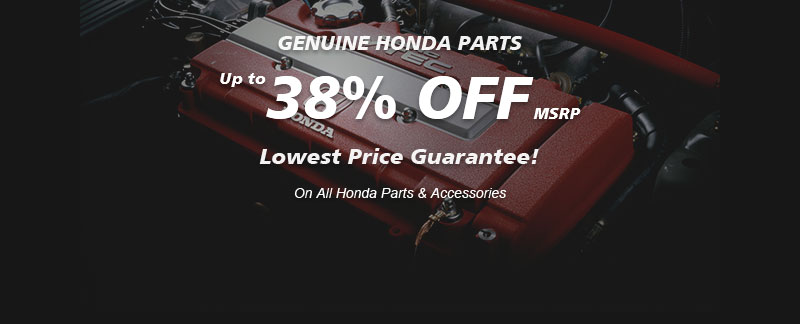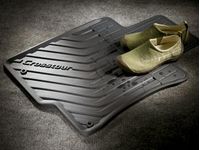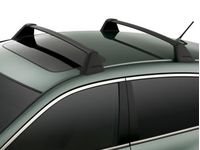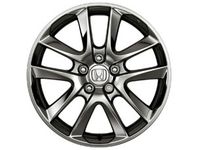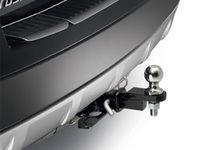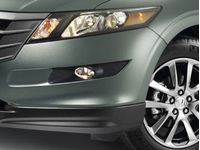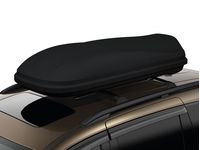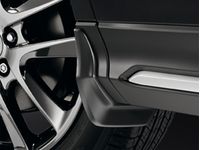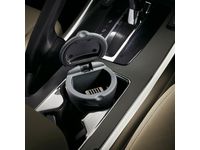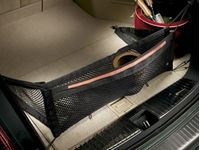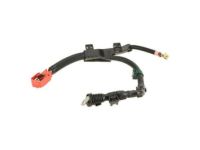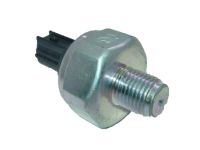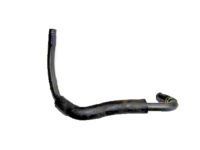Why choose HondaPartsNow
- Unbeatable Prices
HondaPartsNow.com is your prime online source for discounted prices. We offer high-quality options for your vehicle that can't be found anywhere else. HondaPartsNow.com offers genuine parts at discounted prices, allowing you to keep your vehicle running at its peak without straining your budget.
- Dedicated Service
HondaPartsNow.com ranks second to none in devoted customer service. We strive to exceed the customer's expectations and build relationships with the customers. We are always ready to assist you with any inquiry or detail about your vehicle's parts and accessories.
- Rapid Delivery
HondaPartsNow.com is devoted to combining genuine Honda Crosstour parts and accessories with fast and affordable shipping. Most items listed in our catalog are in stock and are shipped out promptly after the order has been successfully processed. This guarantees you receive the parts your vehicle needs without needing to leave your home in just a matter of days.
Popular Genuine Honda Crosstour Parts
- Electrical / Exhaust / Heater / Fuel Parts View More >
- Chassis Parts View More >
- Engine Parts View More >
- Interior / Bumper Parts View More >
- Body / Air Conditioning Parts View More >
- Accessories View More >
Shop Genuine Honda Crosstour Parts with HondaPartsNow.com
Honda Crosstour, as a full-size crossover, is a 5-door station wagon or fastback slotting below the Pilot in size in Honda's SUV lineup. Though it was discontinued for the 2015 model year due to slow sales and got replaced by the Honda HR-V, it did a great job in safety and scored well in tests conducted by IIHS and NHTSA. During Honda Crosstour's production year, it received a facelift for the 2013 model year and offered five trim levels: EX, EX V6, EX-L, EX-L V6, and EX-L V6 4WD. Front-wheel drive and all-wheel drive are available options. Honda Crosstour was powered by a 2.4 L K24A inline 4-cylinder engine, a 3.5 L J35Z V6 engine from 2010 to 2012, and a 3.5 L J35Y V6 engine from 2013 to 2015. And from 2010 to 2012, these engines were equipped with a 5-speed automatic transmission, and from 2013 to 2015, available transmission became 6-speed automatic transmission.
The Honda Crosstour, as an SUV, is expected to conquer challenging road conditions, but prolonged exposure and continuous operation can lead to various problems. One major issue reported by drivers, according to CarComplaints.com, is premature brake wear. Around 20,000 miles, brakes become noisy, unresponsive, and exhibit vibrations, accompanied by visible score marks on the rotors. Given the importance of the braking system for safety, it is advisable to thoroughly inspect the brake pad set and brake disc if similar symptoms arise. Another complaint pertains to suspension and engine failures, causing discomfort during driving. Clicking noises while turning, excessive vibration, steering pulling to the sides, and uneven tire wear can be attributed to axle shaft, CV joint, control arm, front cross-member, sway bar link, and ball joint issues. Regarding engine failure, it is recommended to check the air filter for clogs. Routine maintenance alone is insufficient for the well-being of the Honda Crosstour. It is crucial to be proactive in addressing potential problems, as some auto parts wear out without warning. Regular cleaning of the cabin air filter is essential to prevent restricted airflow and unpleasant odors, which can pose risks to occupants with respiratory conditions. Additionally, components such as the door lock actuator, wiper blades, antenna, and headlights require periodic maintenance.
All OEM parts are precisely engineered to the original part's exact specifications. They've met stringent official quality control standards during manufacturing, so you can be sure that they're of top quality. A vast selection of genuine Honda Crosstour parts, like Transmission - Automatic is available on our website, all offered at discounted prices. Every OEM Honda Crosstour part is covered by the manufacturer's warranty, which also applies to our hassle-free return policy. Enjoy fast delivery service, ensuring you get your parts when you need them. Your shopping experience here is guaranteed to be pleasurable.
Honda Crosstour Parts Questions & Answers
- Q: How Should Battery Cables Be Inspected and Replaced?A: Inspect battery cables for damage, cracked insulation, corrosion, and loose wire strands. Disconnect old cables from battery, noting routing. Take old cables when purchasing new ones. Clean threads of solenoid/ground connection with wire brush. Attach cable to solenoid/ground connection and tighten nut/bolt. Connect cable to positive battery terminal first, then ground cable to negative terminal.
- Q: Where is the Knock Sensor Located on Honda Crosstour?A: Knock sensor is located on front of block, behind intake manifold. Disconnect electrical connector, then unscrew with deep socket/wrench. Installation is reverse of removal. Tighten to torque. V6 models: Knock sensor is located on top of block, underneath intake manifold. Remove upper intake manifold, fuel rail and injector assembly. Disconnect electrical connector, then unscrew with deep socket (VG models). Installation is reverse of removal. Tighten to torque.
- Q: How Can I Inspect and Replace the PCV Hose and PCV Valve of the PCV System?A: To inspect the PCV system, start the engine and allow it to warm up. Pinch off the crankcase ventilation hose and verify the PCV valve clicking sound. To replace, loosen hose clamps, disconnect hoses, unscrew PCV valve, remove and discard washer. On V6 models, remove PCV valve retaining bolt, remove and discard O-rings. Use new O-rings and tighten PCV valve securely.

